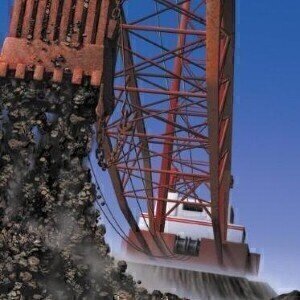Air Monitoring
Engineering Simulation Software Used to Help Calibrate Meteorological Instruments on Phoenix Mars Lander
Jun 11 2010
ANSYS (USA) announce that the University of Alberta used software from ANSYS to aid in interpreting weather data received from the Phoenix Mars lander. In creating a virtual environment of the planet’s unique atmospheric conditions, scientists discovered that heat and radiation from the lander itself could affect daily readings, such as atmospheric pressure, wind velocity and temperature. ANSYS® software helped scientists interpret the data transmitted from the Phoenix to Earth — with rapid turnaround while the mission was in progress — to identify the effects of the lander itself.
The Phoenix spacecraft landed on Mars in May 2008 and, for the next five months, fed back a steady stream of data to Earth. Well before the launch, a team of Canadian scientists at the University of Alberta helped in the development of the lander’s meteorological station (MET). MET was designed to collect measurements that would complement other data critical to the mission. Design and calibration experiments were difficult and expensive to perform, so the university turned to virtual testing with fluid dynamics software from ANSYS. While exploring the anticipated Martian environment, scientists discovered that, under certain wind conditions, heat emitted from the lander could cause a temperature sensor to show higher-than-atmospheric values. “With space missions, there is only one shot at getting it right. Any minor flaw could result in the instantaneous loss of years of preparation and hundreds of millions of dollars,” said Carlos Lange, associate professor of mechanical engineering at the University of Alberta. “Using simulation software from ANSYS, we learned that the internal heat generation and emission of radiation from the lander’s surface could increase temperature measurements. Similarly, obstacles upstream from velocity and pressure sensors could alter readings of wind magnitude and/or direction.” Therefore, Lange and his colleagues calibrated the instruments through a large parametric study. After the lander touched down on Mars, the university team used the results of such simulations to evaluate the raw mission data and find instances when these wind directions occurred. This process was key to preventing misinterpretation of the data by the Phoenix scientific team.
Simulation turnaround time was a concern to the team as well. During the mission, limited time and power resources were allocated daily to the operation of specific instruments. “To make decisions about the prioritization of data collection, strategic planners sometimes required input based on the results of the simulations. So we needed to quickly simulate new cases,” Lange said. This short time-response requirement was met by employing the high-performance computing capabilities of ANSYS software, running the simulations in parallel on a cluster to achieve, at times, super-linear speedup (speedup greater than an amount proportional to the number of processors used). The efficiency of high-performance computing capabilities and multi-core hardware together enabled new simulations to be completed within the timeframe required for decision making. The overall success of the University of Alberta’s work has allowed for additional simulations to be performed to aid in the explanation of certain phenomena found in the raw data.
Digital Edition
AET 28.3 September 2024
September 2024
Business News - ENVEA announces acquisition of APAQ Group - SICK and Endress+Hauser sign strategic partnership - Efforts to curb gas flaring intensify amid environmental concerns Air Monito...
View all digital editions
Events
WEATHER • CLIMATE • WATER / EARTH OBSERVATIONS / GREEN ECONOMY
Oct 29 2024 St. Petersburg, Russia
Oct 30 2024 Hong Kong
Nov 05 2024 Toronto, Canada
Nov 05 2024 Rimini, Italy
Nov 06 2024 Ho Chi Minh City, Vietnam



















